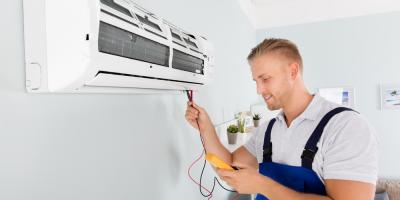An air conditioning system's filters, coils, and fins require regular maintenance for the unit to work effectively and efficiently throughout its years of service. Ignoring needed maintenance ensures a consistent decline in air conditioning performance while energy usage progressively increases. Have a look at our Energy Saver 101 Infographic: House Cooling for more ways to assist improve your comfort and the effectiveness of your a/c.
A/c Unit Filters
The most essential upkeep task that will ensure the efficiency of your air conditioning system is to regularly change or clean its filters. Clogged, unclean filters block typical air flow and lower a system's performance considerably. With typical airflow blocked, air that bypasses the filter may carry dirt straight into the evaporator coil and impair the coil's heat-absorbing capacity. Replacing a dirty, clogged up filter with a clean one can reduce your air conditioning system's energy consumption by 5% to 15%.
For central air conditioning conditioners, filters are typically situated someplace along the return duct's length. Typical filter places are in walls, ceilings, furnaces, or in the air conditioner itself. Room air conditioners have a filter mounted in the grill that faces into the room.
Some types of filters are multiple-use; others must be replaced. They are offered in a variety of types and performances. Tidy or replace your cooling system's filter or filters monthly or 2 during the cooling season. Filters may need more regular attention if the air conditioning system is in continuous use, undergoes dirty conditions, or you have fur-bearing pets in your home.
Air Conditioner Coils
The air conditioner's evaporator coil and condenser coil collect dirt over their months and years of service. A clean filter prevents the evaporator coil from soiling ΕΠΙΣΚΕΥΗ ΚΛΙΜΑΤΙΣΤΙΚΩΝ ΑΘΗΝΑ quickly. In time, nevertheless, the evaporator coil will still gather dirt. This dirt reduces air flow and insulates the coil, decreasing its ability to soak up heat. To prevent this problem, check your evaporator coil every year and clean it as required.
Outside condenser coils can likewise become extremely dirty if the outdoor environment is dusty or if there is foliage close by. You can quickly see the condenser coil and notification if dirt is gathering on its fins.
You must decrease dirt and particles near the condenser unit. Your dryer vents, falling leaves, and lawn mower are all possible sources of dirt and particles. Cleaning up the area around the coil, getting rid of any debris, and trimming foliage back at least 2 feet (0.6 meters) allow for appropriate air flow around the condenser.
Coil Fins
The aluminum fins on evaporator and condenser coils are quickly bent and can obstruct airflow through the coil. Air conditioning wholesalers sell a tool called a "fin comb" that will comb these fins back into nearly original condition.
Condensate Drains pipes
Occasionally pass a stiff wire through the unit's drain channels. Obstructed drain channels prevent a system from lowering humidity, and the resulting excess moisture may tarnish walls or carpet.
Window Seals for Space Air Conditioners
At the start of each cooling season, check the seal in between the a/c and the window frame to guarantee it makes contact with the unit's metal case. Moisture can harm this seal, allowing cool air to get away from your house.
Getting ready for Winter season
In the winter, either cover your room a/c unit or eliminate and save it. Covering the outside system of a central air conditioner will secure the unit from winter season weather and particles.
Hiring an Expert
When your a/c needs more than regular maintenance, employ a professional service technician. A well-trained professional will find and repair issues in your cooling system.
The service technician needs to:
Check for right amount of refrigerant

Test for refrigerant leakages utilizing a leakage detector
Capture any refrigerant that must be left from the system, instead of illegally releasing it to the atmosphere
Check for and seal duct leakage in main systems
Step airflow through the evaporator coil
Verify the correct electric control series and make sure that the heating unit and cooling system can not operate concurrently
Examine electrical terminals, clean and tighten connections, and use a non-conductive finish if needed
Oil motors and examine belts for tightness and wear
Examine the accuracy of the thermostat.